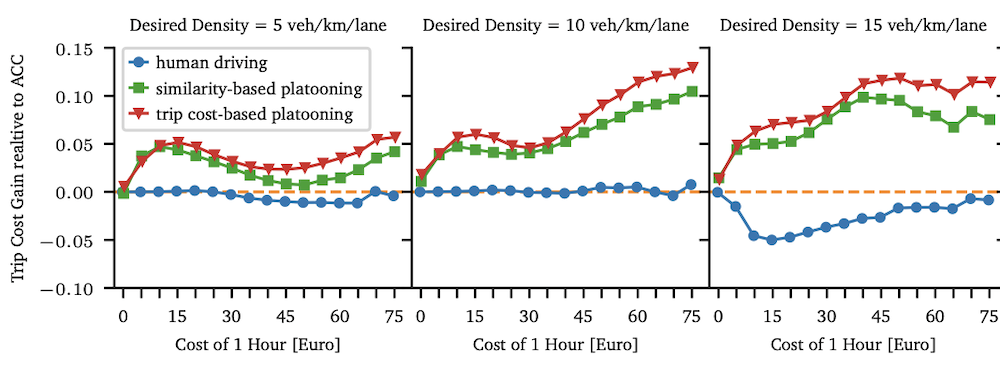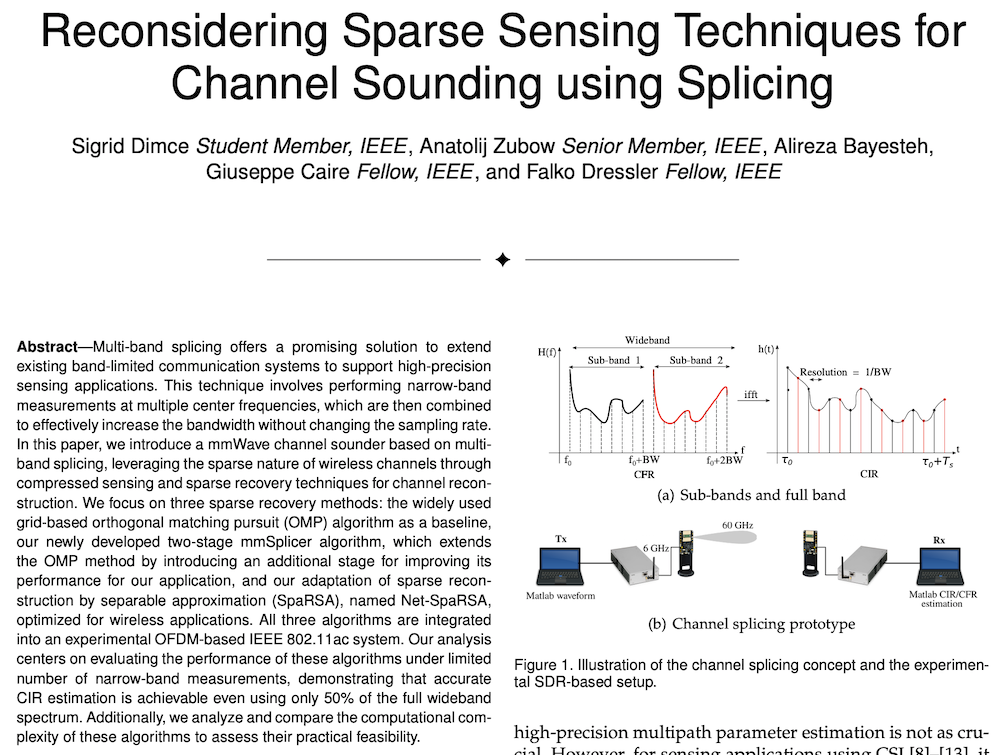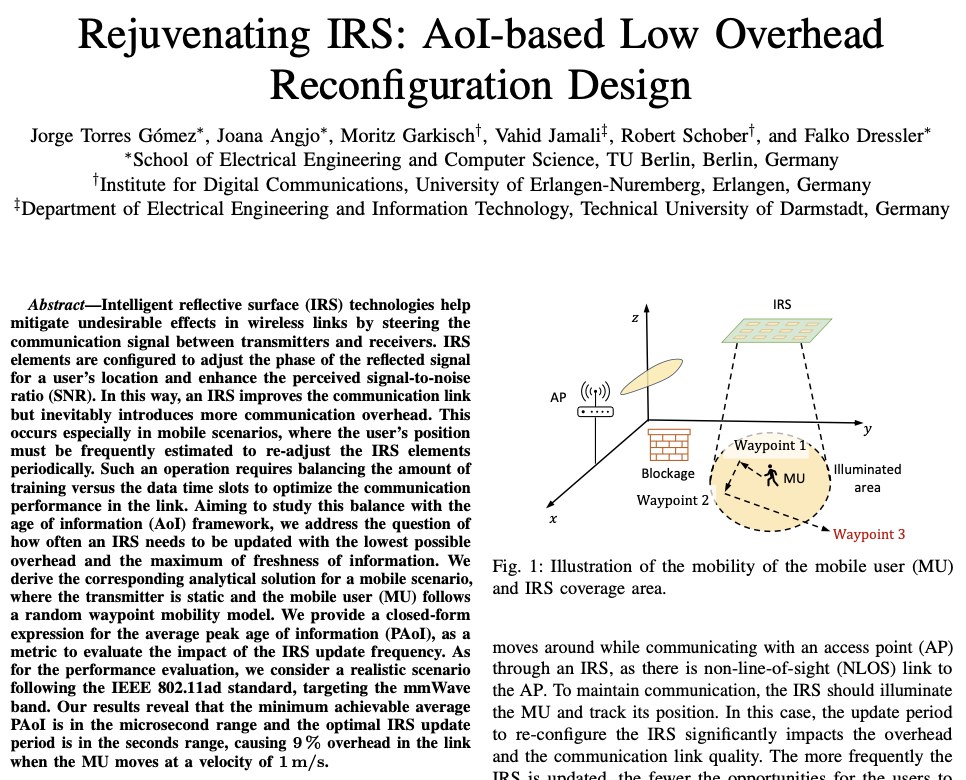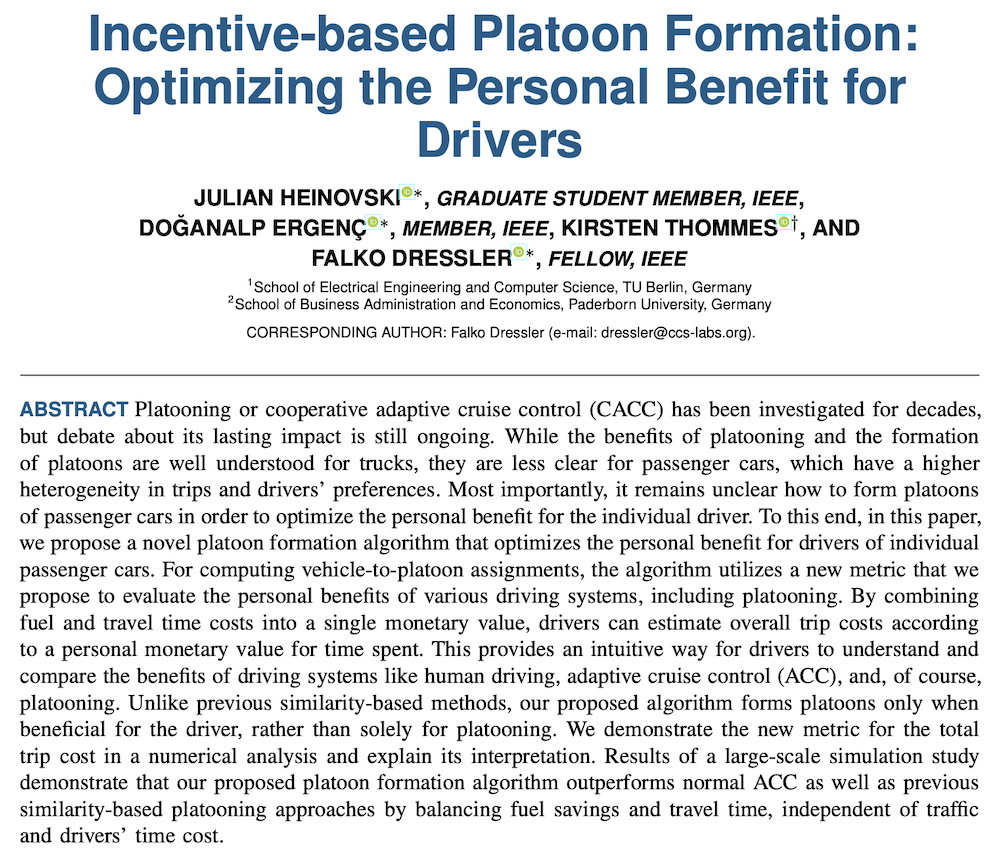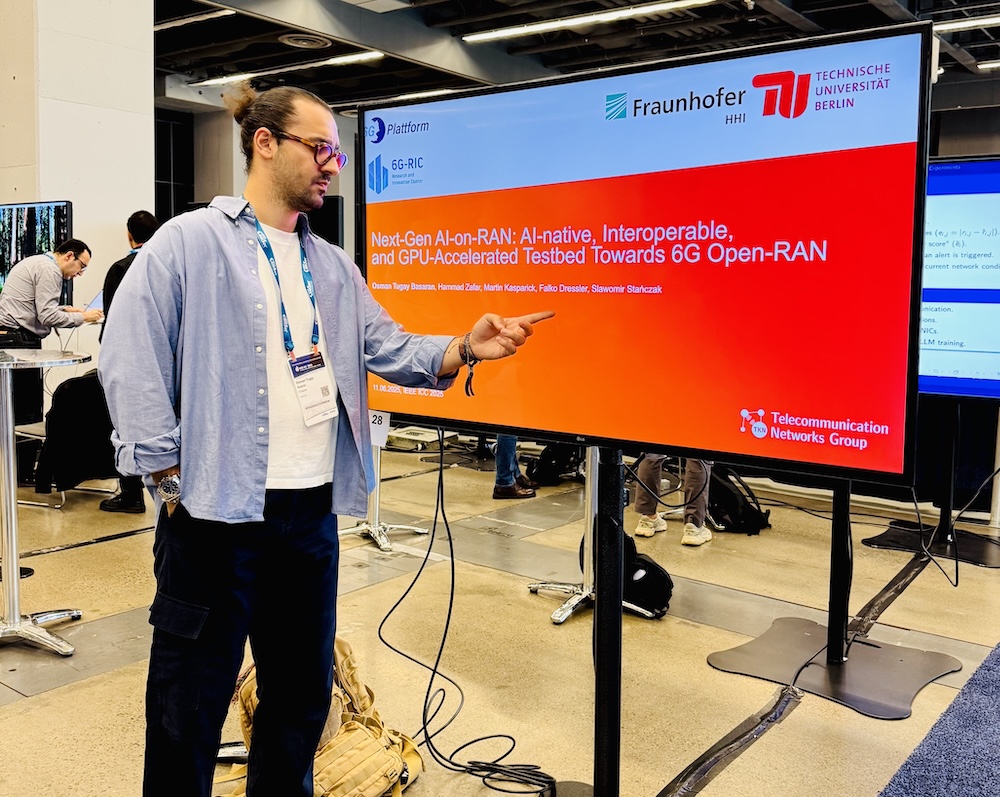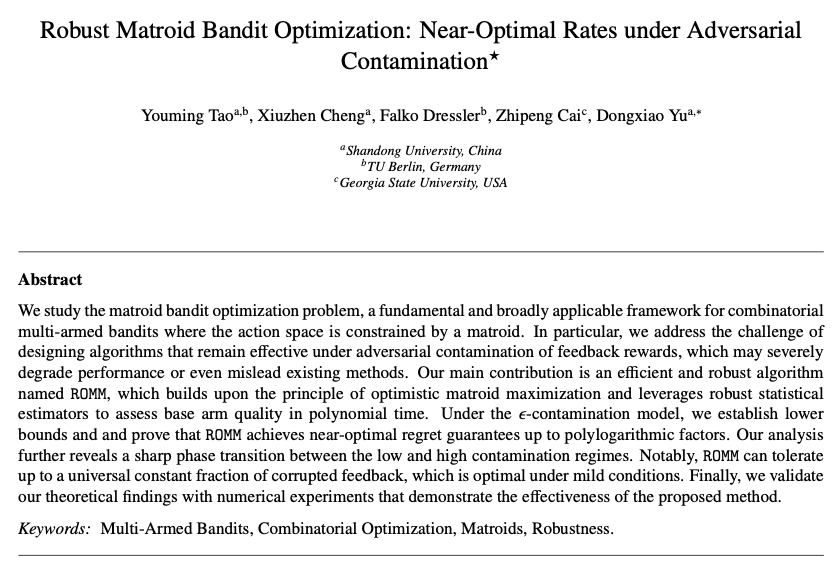Literature Database Entry
hagenauer2014advanced
Florian Hagenauer, Patrick Baldemaier, Falko Dressler and Christoph Sommer, "Advanced Leader Election for Virtual Traffic Lights," ZTE Communications, Special Issue on VANET, vol. 12 (1), pp. 11–16, March 2014.
Abstract
We examine the network performance of algorithms for self-organized traffic management with a strong focus on the wireless networking between the cars. One of many technologies to make road traffic more safe and efficient is the Virtual Traffic Light (VTL) system which is able to coordinate traffic flow at intersections without the need for physical lights. VTL uses a leading vehicle at the intersection for controlling the traffic light. We developed algorithms for leader election and traffic light computation in realistic vehicular networking scenarios. Our key contribution is the extension of this algorithm to support arbitrary intersection layouts. We investigated the proposal in synthetic and realistic scenarios. Our results show that, overall, VTL uses network resources efficiently and has a positive influence on the driving experience and outperforms stationary traffic lights at low to medium network load. We further identified optimization potentials in dealing with high network load and fairness.
Quick access
Original Version ![]() (at publishers web site)
(at publishers web site)
Authors' Version ![]() (PDF on this web site)
(PDF on this web site)
BibTeX ![]()
Contact
Florian Hagenauer
Patrick Baldemaier
Falko Dressler
Christoph Sommer
BibTeX reference
@article{hagenauer2014advanced,
author = {Hagenauer, Florian and Baldemaier, Patrick and Dressler, Falko and Sommer, Christoph},
doi = {10.3969/j.issn.1673-5188.2014.01.002},
title = {{Advanced Leader Election for Virtual Traffic Lights}},
pages = {11--16},
journal = {ZTE Communications, Special Issue on VANET},
publisher = {ZTE},
month = {3},
number = {1},
volume = {12},
year = {2014},
}
Copyright notice
Links to final or draft versions of papers are presented here to ensure timely dissemination of scholarly and technical work. Copyright and all rights therein are retained by authors or by other copyright holders. All persons copying this information are expected to adhere to the terms and constraints invoked by each author's copyright. In most cases, these works may not be reposted or distributed for commercial purposes without the explicit permission of the copyright holder.
The following applies to all papers listed above that have IEEE copyrights: Personal use of this material is permitted. However, permission to reprint/republish this material for advertising or promotional purposes or for creating new collective works for resale or redistribution to servers or lists, or to reuse any copyrighted component of this work in other works must be obtained from the IEEE.
The following applies to all papers listed above that are in submission to IEEE conference/workshop proceedings or journals: This work has been submitted to the IEEE for possible publication. Copyright may be transferred without notice, after which this version may no longer be accessible.
The following applies to all papers listed above that have ACM copyrights: ACM COPYRIGHT NOTICE. Permission to make digital or hard copies of part or all of this work for personal or classroom use is granted without fee provided that copies are not made or distributed for profit or commercial advantage and that copies bear this notice and the full citation on the first page. Copyrights for components of this work owned by others than ACM must be honored. Abstracting with credit is permitted. To copy otherwise, to republish, to post on servers, or to redistribute to lists, requires prior specific permission and/or a fee. Request permissions from Publications Dept., ACM, Inc., fax +1 (212) 869-0481, or permissions@acm.org.
The following applies to all SpringerLink papers listed above that have Springer Science+Business Media copyrights: The original publication is available at www.springerlink.com.
This page was automatically generated using BibDB and bib2web.

